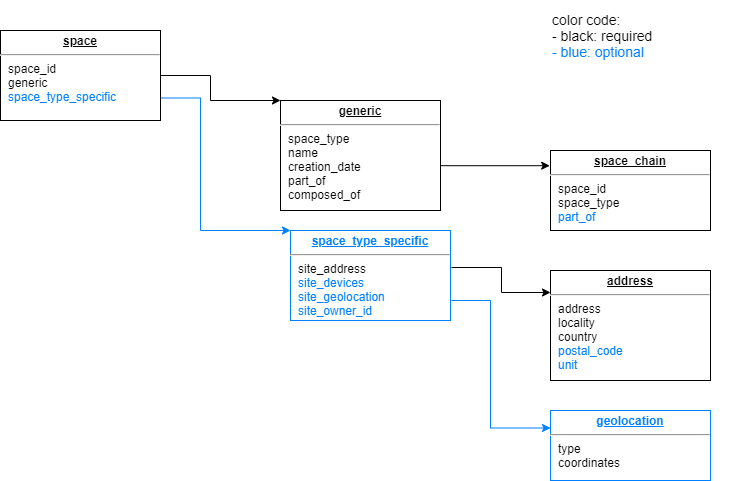4.1.3.3.5. Site
A site is the highest level in the hierarchical tree describing a physical environment.
A site is composed of one or multiple buildings
Some devices can be associated at the site Level
For example, a fleet of floor cleaning machines can be associated to a site if no machines always clean the same building
As another example, a people counter can be installed at the main entrance of fenced-in campus of a company with multiple buildings
A site belongs to an owner entity.
In the case of a private site, the owner entity is the company or person that owns the site
For example, the Microsoft headquarters site in Redmond, Washington, is owned by Microsoft and contains 83 buildings.
In the case of a public site, like a government site or public university, the owner entity is an administration, such as a city or state.
For example, the National Mall in Washington DC is a site that includes many museums, is administered by the US federal government as its owner entity.
4.1.3.3.5.1. FDS compliance requirements
4.1.3.3.5.1.1. Object Model
4.1.3.3.5.1.1.1. Space object for the site space type
The space type in the generic space object must be
“site”
The digital twin information provider must provide a space object that contains a space_type_specific object defined in the following diagram

The address object must follows Apple’s (Indoor Mapping Data Format) specifications
When the digital twin information provider provides additional information about the site, the composed_of property must be an array representing the list of buildings in the site.
The type of the space objects represented by the list of space IDs must be “building”
A site space cannot be part of another space
The part_of property in the space generic object must refer to the void space_chain object
{
"space_id": "00000000-0000-0000-0000-000000000000",
"generic": {
"space_type": "nothing",
"name": "nothing",
"part_of": {
"space_id": "00000000-0000-0000-0000-000000000000",
"space_type": "nothing"
}
}
}
The detailed API specifications for each object can be found in the reference chapter.
4.1.3.3.5.1.2. Web API (Pull Model)
The digital twin information provider must implement the Web API as defined in the pull model specifications
4.1.3.3.5.1.3. Publish/Subscribe (Push model)
Note
No publish/subscribe messages related to digital twin information are defined in FDS Version 2
4.1.3.3.5.2. Use case example
4.1.3.3.5.2.1. Site space type
Note
Join FDS to get access to examples and use cases.